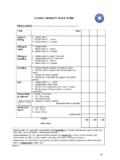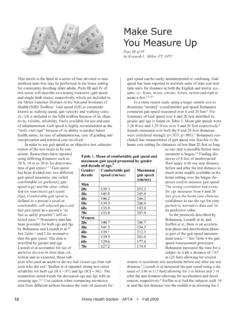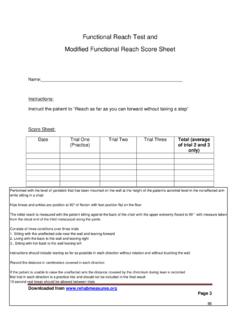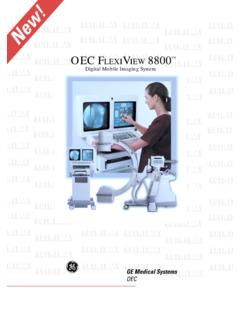Transcription of Appendix 2. - Mobile Physical Therapy
1 TRUNK IMPAIRMENT SCALE. Appendix 2. The Trunk Impairment Scale for People With Multiple Sclerosis Starting position for all items: sitting, thighs horizontal and feet flat on support, knees 90 flexed, no back support, hands and forearms resting on the thighs. The subject gets 3 attempts for each item. The best performance is scored. The observer may give feedback between the tests. Instructions can be verbal and nonverbal (demonstration). Item Task Description Score Description Score Remarks Static Sitting Balance 1. Keep starting position for 10 s Falls or needs arm support 0 If 0, total TIS score is 0.
2 Maintains position for 10 s 2. 2. Therapist crosses strongest leg over Falls or needs arm support 0. weakest leg, keep position for 10 s Maintains position for 10 s 2. 3. Patient crosses strongest leg over Falls 0. weakest leg Needs arm support 1. Displaces trunk 10 cm or assists with arm 2. Moves without trunk or arm compensation 3. /7. Dynamic Sitting Balance 1. Touch seat with right elbow, return to Does not reach seat, falls, or uses arm 0 If 0, items 2 3 are also 0. starting position (task achieved or not) Touches seat without help 1. 2. Repeat item 1 (evaluate trunk movement) No appropriate trunk movement 0 If 0, item 3 is also 0.
3 Appropriate trunk movement (shortening 1. right side, lengthening left side). 3. Repeat item 1 (compensation strategies Compensation used (arm, hip, knee, foot) 0. used or not) No compensation strategy used 1. 4. Touch seat with left elbow, return to Does not reach seat, falls, or uses arm 0 If 0, items 5 6 are also 0. starting position (task achieved or not) Touches seat without help 1. 5. Repeat item 4 (evaluate trunk movement) No appropriate trunk movement 0 If 0, item 6 is also 0. Appropriate trunk movement (shortening 1. left side, lengthening right side). 6. Repeat item 4 (compensation strategies Compensation used (arm, hip, knee, foot) 0.)
4 Used or not) No compensatory strategy used 1. 7 Lift right side of pelvis from seat, return to No appropriate trunk movement 0 If 0, item 8 is also 0. starting position (evaluate trunk Appropriate trunk movement (shortening 1. movement) right side, lengthening left side). 8. Repeat item 7 (compensation strategies Compensation used (arm, hip, knee, foot) 0. used or not) No compensation strategy used 1. 9. Lift left side of pelvis from seat, return to No appropriate trunk movement 0 If 0, item 10 is also 0. starting position (evaluate trunk Appropriate trunk movement (shortening 1. movement) left side, lengthening right side).
5 10. Repeat item 9 (compensation strategies Compensation used (arm, hip, knee, foot) 0. used or not) No compensation strategy used 1. /10. Coordination 1. Rotate shoulder girdle 6 times (move Does not move right side 3 times 0 If 0, item 2 of also 0. each shoulder 3 times forward) Asymmetric rotation 1. Symmetric rotation 2. 2. Repeat item 1, perform within 6 s Asymmetric rotation 0. Symmetric rotation 1. 3. Rotate pelvis girdle 6 times (move each Does not move right side 3 times 0 If 0, item 4 is also 0. knee 3 times forward) Asymmetric rotation 1. Symmetric rotation 2. 4. Repeat item 3, perform within 6 s Asymmetric rotation 0.
6 Symmetric rotation 1. /6. Total Trunk Impairment Scale /23. 76 . Verheyden et al 672006. Physical Therapy . Volume 86 . Number 1 . January








